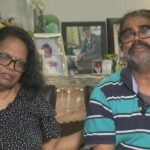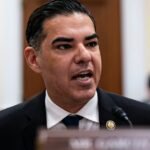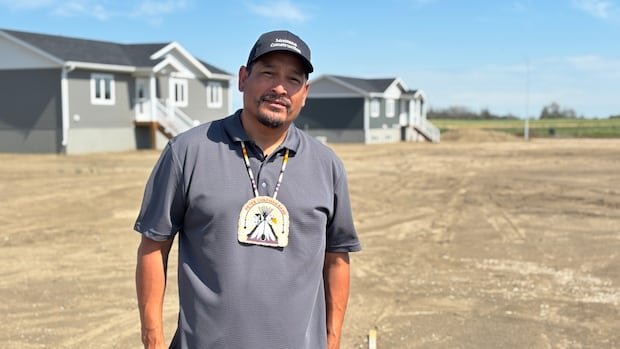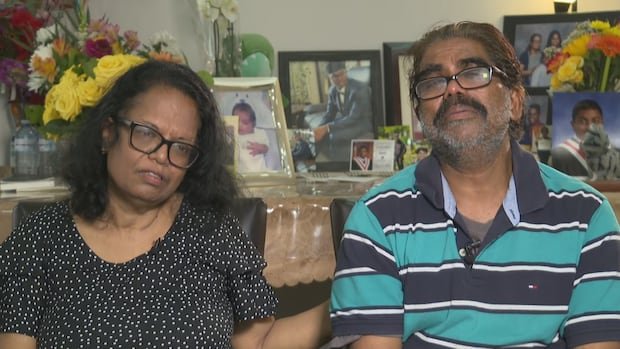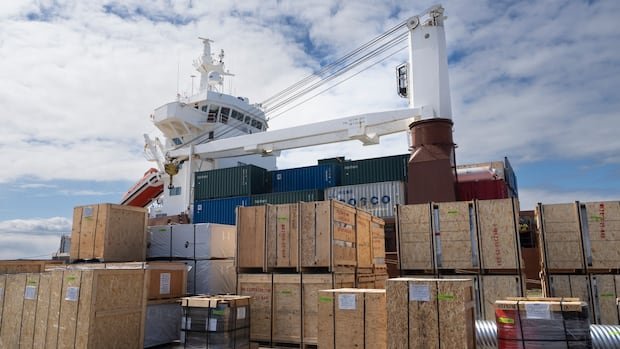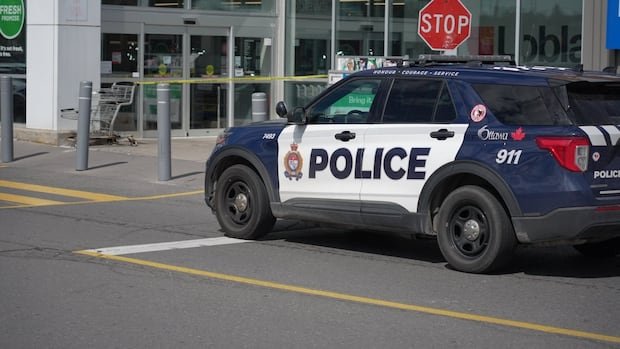In the center of Saskatchewan, surrounded by wheat fields, Adam Whitehead is showing some of the newest houses of Peter Chapman First Nation, home of a development boom, since he builds a new community from scratch.
“This was just a Canola field a year and a half ago,” he said, looking at a new gravel road lined with 14 houses. “Our vision like the whole community was to obtain a solid base for the next generation.”
Whitehead, a CREE community councilor, participates in the fighting for decades for Canada to be recognized as an independent band. In the eyes of the federal government, it is still part of James Smith Cree Nation more than a century after a forced fusion.
The community is using $ 50 million from a treaty land agreement with the federal government to build a new community, as part of a renewed impulse for independence. The construction is underway in a new band office, garage of public works, sports fields and a subdivision with 28 houses.
“We are trying to correct the mistake they made,” said Whitehead, on a tour of the new housing development. “We do not stop until the government finally realizes that we are an independent band.”
‘Stripped of our own community’
The ancestors of the CREE community residents arrived in the area in the 1880s from Lake Cumberland in the Northeast of Saskatchewan, moving with their leader Peter Chapman in search of better lands for agriculture.
The Cumberland band, as he knew, signed Treaty 5 in 1875. In 1889, he received the Earth as part of the establishment of a new reserve adjacent to James Smith Cree Nation and became a recognized first -nation band.
But in 1902, the Indian agent merged the community in the band James Smith at that time, according to government records.
Peter Chapman Chief Robert Head said that his ancestors arrived at the Fort à la Corne area to start a new band, without interest in joining the existing ones. But the amalgam facilitated the federal government to take and sell reserve land for profit.
“We were our own people. We had our own government and we had our own membership,” he said.
Peter Chapman First Nation, Robert Head, says that the independence of his community was deleted more than 100 years ago when he was forced to merge with two other groups. He hopes Canada recognizes that, he recognizes his nation and allows them to advance.
Head said independence would finally allow his community to have financing agreements with Ottawa for services such as medical care and education.
“They should have allowed us to evolve as our own first nation, but everything that was removed,” he said. “This step towards reincorporation is the final chapter of our history, where we are finally recognized and finally we can assume our own issues as a nation.”
A third band, Chakastaypasin First Nation, also merged after their lands were removed, according to the documents. The three original reserve lands were bordered.
We never create this. Canada created it.—Hakastaypasin Head Calvin Sanderson
Chakastaypasin’s boss, Calvin Sanderson, said the impulse to recover recognition has been long and slow.
“We never created this. Canada created it,” he said. “We signed treated and yet we were stripped of our own community.”
Chakastaypasin is also using his participation in the settlement of the rights of the treaty to build new homes in the James Smith Reserve, and the unreserved lands he bought south of melfort.
Sanderson said the lack of status and land has prevented the community from accessing direct funds for very necessary housing. Wait for you to change soon.
“It is a long and very stressful obstacle. But that light at the end of the tunnel comes and we hope we can turn on that candle once and for all,” he said.
“I’m glad we never give up our vision because it is the next generation now that it will bloom.”
Renovated thrust
The combined membership of the three communities voted in 2000 to restore and restore the original bands, choosing three bosses and political representation for the first time in almost a century.
In a second referendum, they voted overwhelmingly to proceed with the division of government, land, financing and assets.
But the path to Ottawa’s recognition has been slow.
The three bosses have launched a renewed impulse this year, signing a document to formally divide James Smith Cree Nation in three different and recognized nations, a step that they describe as an “important milestone.” The agreement was delivered to the Federal Government in July and the conversations are underway with the indigenous services of Canada.
Jacinthe Goulet, a spokesman for the department, confirmed that the three communities are involved in a process that seeks formal recognition such as separate and different bands under Indian law.
“The process will be handled with careful consideration,” he wrote in a statement sent by email. “It is a premature specular about the details of the possible results or the potential deadlines at this stage.”
‘It will become a reality’
In the bustling development site of Peter Chapman First Nation, staff and leaders are already working on a new band office, the first in the community. The modern building has large windows that look at the fields of quiet meadows and the walls are decorated with bright colored paintings by a community artist.
Until recently, your boss and councilor Shared space with James Smith Cree Nation.
For the old man and former head of the Chief Phyllis, it is a promising sign of the future for the Peter Chapman band.
“Finally we will have our own land and our own reservation and our own saying about how we want to live,” he said.
Head said his band was always the smallest of the three within the community of James Smith, which makes it harder to ensure reserve work and say in decisions about housing and infrastructure projects.
Becoming an independent band would allow the community to access Ottawa’s funds without flowing first through James Smith’s leadership.
“We have many band members who live in urban centers and would really like to return home,” he said.
“For many, many years have worked on this problem and will become reality.”
For Adam Whitehead, the new houses built in less than a year are evidence that the vision of an independent nation is already a step closer to becoming a reality.
On the tour, he showed how each new property was built with high quality materials and durable insulation to prevent mold, which is often a problem in the housing in reserve. Most houses are also built to accommodate large families, with up to six rooms, to avoid overcrowding.
Families are expected to move in this September, with ball diamonds, a track, a sand and a park that is built right in front of the rear courtyards.
Whitehead, who lives out of service due to housing scarcity, hopes to return to himself, once it is his turn in a growing waiting list.
“I think it is our right to be our own community,” he said. “It’s just a matter of time.”

